main: March 2008 Archives
Rifftides reader Jay Thomas, a star of the Seattle Repertory Jazz Orchestra, alerts us to a broadcast of the SRJO's concert of Benny Carter's Kansas City Suite.
If you missed our Kansas City Suite concerts on March 15-16, the entire 10-movement suite will be re-broadcast over KPLU FM 88.5 on Jim Wilke's Jazz Northwest show this coming Sunday, April 6 at 1:00 PM PDT.
You can also hear the broadcast online at KPLU.org from anywhere in the world. This was a very popular concert, so we hope you can tune in.
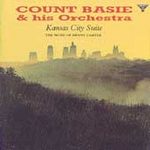 Kansas City Suite is one of Carter's middle period masterpieces. Count Basie recorded it for Roulette in 1960 with his "new testament" band that included Thad Jones, Joe Newman, Frank Wess, Frank Foster, Marshall Royal, Benny Powell, Al Grey and the great latterday Basie rhythm section. Capitol reissued it as a compact disc in 1990, but the LP and the CD fell out of circulation long ago. An internet search discloses that the Basie version is available only as a used LP or an MP3 download. So Jim Wilke's KPLU broadcast of the SRJO may be the only chance for many people to hear an important Carter work.
Kansas City Suite is one of Carter's middle period masterpieces. Count Basie recorded it for Roulette in 1960 with his "new testament" band that included Thad Jones, Joe Newman, Frank Wess, Frank Foster, Marshall Royal, Benny Powell, Al Grey and the great latterday Basie rhythm section. Capitol reissued it as a compact disc in 1990, but the LP and the CD fell out of circulation long ago. An internet search discloses that the Basie version is available only as a used LP or an MP3 download. So Jim Wilke's KPLU broadcast of the SRJO may be the only chance for many people to hear an important Carter work.
At the Berlin Jazz Fest in 1989, Carter and the WDR Big Band played the opening movement of the suite, with John Clayton conducting. To see and hear video of that performance, click here. Notice Clayton looking boyish and Carter, who was eighty-two, only slightly older. The WDR-ites should have eliminated any shred of doubt that Europeans can swing.
In all honesty, I think I just played what I felt was right for me. And I think I would have done the same thing, even if I'd been born later, when Charlie Parker was influencing everybody. The truth is, I never gave it much thought. I just played what I had to play.
At my age, I realize that my most precious possession is time, and I've got too much unfinished work to do to spend even a minute talking about myself.--Benny Carter, 1907-2003
It was a lucky break that The Philadelphia Inquirer's Dan DeLuca did a column about a new CD in tribute to the pioneering guitarist Lonnie Johnson. Here is some of the piece:
"I honestly do not think there was anyone else who crossed the line between being an idiomatic blues musician who was able to master the vocabulary of jazz like Lonnie Johnson did," says Aaron Luis Levinson, the Grammy-winning Philadelphia producer who helmed Rediscovering Lonnie Johnson (Range Records). "He was a unique figure in that he was able to live in two different worlds. Here's a guy who was playing rural blues music in the 1920s, who also played in the Duke Ellington Orchestra."
....But that's getting ahead of our story. Before Johnson could be rediscovered in time for the 1960s blues revival, he had been famous - and forgotten - more than once in a career that, as Levinson puts it, qualifies him as a sort of "musical Zelig."
To read all of DeLuca's column about Johnson's several comebacks and rediscoveries, go here.
Why did I call finding the column a lucky break? Because it is a reason to give you links to complete performances by Johnson, beginning with "Hotter Than That", from 1927. In Johnson's exchanges with Louis Armstrong's horn and voice, you'll hear some of the first single-string guitar improvisation in recorded jazz.
Johnson made several records with Eddie Lang, another guitar hero; a black man and a white man blazing trails in music and in interracial recording. Listen to them play "Deep Rhythm Minor Stomp." This is 1929.
For a third sample of Johson's riveting acoustic guitar playing, this time with one of the blues vocals that made him a hit with the record-buying public, click here and listen to "Cat You Been Messin' Around" from 1932. His guitar solos are as gripping as the song's story. You can hear more of Lonnie Johnson's recordings if you visit his page at the Red Hot Jazz Archive. You will find several CD collections of his recordings at this site.
There was linear jazz improvisation on the guitar before Charlie Christian, and Johnson was its early master.
Rifftides reader Debra Kinzler writes:
For an interesting account of the history of Kenya and Sanabria's preparation for the concert, see Marc Myers' JazzWax. For details about the free concert, go to the Manhattan School web site.
I would like to let you know about a concert to take place at New York's Manhattan School of Music. On April 1 Bobby Sanabria, the MSM Afro-Cuban Jazz orchestra and Candido Camero will be giving the first-ever live performance of Machito & The Afro-Cubans Kenya. Bobby has recreated this historic recording that was made fifty years ago in New York City.
Patti Bown died last Friday in a Pennsylvania nursing home, little known not only to the general public but also to many jazz listeners. Despite her talent as a pianist, Miss Bown never became celebrated to the degree that she might have. That was for reasons at least partly to do with her uncompromising individualism.
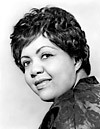 Good breaks, good management and good advice--if she had been willing to take it--could have made a difference. There is strong evidence of her talent on recordings she made as a member of the remarkable Quincy Jones big band and with Gene Ammons, Jimmy Rushing, Illinois Jacquet, Dinah Washington and Oliver Nelson, among others.
Good breaks, good management and good advice--if she had been willing to take it--could have made a difference. There is strong evidence of her talent on recordings she made as a member of the remarkable Quincy Jones big band and with Gene Ammons, Jimmy Rushing, Illinois Jacquet, Dinah Washington and Oliver Nelson, among others.
In Patti's obituary in Monday's Seattle Times, Paul de Barros described her as "idiosyncratic, outspoken, versatile." He might have added brilliant, well-read and argumentative. I knew her for a time in Seattle before she moved to New York. One night we were at a small party in honor of Dave Brubeck following a concert by his quartet. It was shortly after Brubeck was the subject of a TIME magazine cover story and was becoming famous. Brubeck, Patti and I sat talking at length about the part of the article that dealt with his forthright attitude on racial matters as expressed in a verse sung years later by Louis Armstrong in Brubeck's musical The Real Ambassadors.
'They say I look like God,
Could God be black my God!
If both are made in the image of thee,
Could thou perchance a zebra be?'
How I wish that I had a recording of that conversation, which I remember only as alternating between intensity and laughter.
Patti was a vital and unfailingly interesting part of a Seattle jazz community that also included trumpeter Floyd Standifer and bassist Buddy Catlett. They were all childhood friends of Jones. When he formed the big band he took to Europe in 1959, they were in it, along with others including Phil Woods, Quentin Jackson, Budd Johnson, Melba Liston, Clark Terry and Joe Harris--a cross-section of veterans and emerging stars. Patti is in the rhythm section of that remarkable band on the Quincy Jones DVD in the Jazz Icons series.
Recently, from Holland emerged video clips of a small unit from the Jones band in which Patti was the pianist. The others are Woods, Jackson, Harris (misidentified on the videos as Joe Morris), Catlett and Sahib Shihab. Each of the musicians solos on all three tunes. Patti's chorus on "Straight No Chaser" comes closest to what I remember of the daring, even quirky, aspects of her improvisational style, but she is also eloquent on "Undecided" and "Ornithology." No one takes more than one solo chorus in these clips that run in the neighborhood of three minutes apiece. It is striking how expressive the players are in the forced economy of the time limit. In the post-Coltrane era, that kind of self-editing is all but a lost art.
You may also hear Patti Bown on these CDs:
Quincy Jones: Pure Delight
Oliver Nelson: Afro/American Sketches
Oliver Nelson Verve Jazz Masters (on four tracks)
Gene Ammons: Late Hour Special
Patti Bown, whom I wish I had known longer and better; gone at seventy-six.
The virtuoso percussionist Paoli Mejias and his quintet erupted Saturday night in the sedate surroundings of The Seasons. No one was hurt in the explosion; quite the opposite, we all left feeling better. Most of the repertoire was from Mejias's CD Transcend, which features Latin stars Miguel Zenón, Luis Perdomo, Hans Glawinschnig and Antonio Sánchez. The sidemen in Mejias' road band are less well known outside the hard-core Latin jazz community, but the authority of their work in the pre-Easter concert indicates that their relative obscurity cannot last.
 On congas, timbales, bongos and the West African drum called djembe, Mejias was a whirlwind of speed, intensity, tonal subtlety and rhythmic precision. His bongos-piano duet with Yan Carlos Artime on "Hello Nany" exhibited even more concentrated power than on the version in this video, captured at the Heineken Festival in Puerto Rico. With technique and control reflecting years of classical training in his native Cuba, Artime generated excitement throughout the concert. Alto saxophonist Richard Pons matched it, drawing on Charlie Parker, Cannonball Adderley, Ornette Coleman and touches of Bud Shank's Brazilliance wrapped into a style incorporating lyricism, freedom and structural logic.
On congas, timbales, bongos and the West African drum called djembe, Mejias was a whirlwind of speed, intensity, tonal subtlety and rhythmic precision. His bongos-piano duet with Yan Carlos Artime on "Hello Nany" exhibited even more concentrated power than on the version in this video, captured at the Heineken Festival in Puerto Rico. With technique and control reflecting years of classical training in his native Cuba, Artime generated excitement throughout the concert. Alto saxophonist Richard Pons matched it, drawing on Charlie Parker, Cannonball Adderley, Ornette Coleman and touches of Bud Shank's Brazilliance wrapped into a style incorporating lyricism, freedom and structural logic.
Bass guitarist Gabriel Rodriguez and drummer Efraín Martinez provided nonstop energy in the rhythm section and in solo. Martinez's collaboration with Mejias when the leader moved to timbales was a high point of the evening's excitement (and volume) and an object lesson of how in the right four hands, drum set and timbales can equal more than the sum of their parts. Here is video of Martinez sharing a solo with Mejias playing the djembe. In the clip, you see the same group that played The Seasons on Saturday night. This disciplined, strenuously rehearsed band of fiery young Puerto Ricans can raise your blood temperature.
ROD LEVITT, in Solid Ground (RCA Victor), toots his trombone at the head of a lively seven-man band in a parade of his own compositions...The band irreverently slices "Rio Rita" into a jazzy jigsaw puzzle.--TIME, June 3, 1966
I liked his playing and his writing, and always appreciated his sunny disposition.--Bill Crow, 2007
Rifftides reader Charles Landy wrote:
Enjoy your blog immensely. Bought 3 Rod Levitt LPs on e-bay recently and found them (especially Insight) just as rewarding as you suggested. Have some Billy Byers and some other perhaps (to many jazz fans of recent vintage) lesser known musicians like Pete Rugolo, Tom Talbert, Ralph Burns, Marty Paich, Frank Capp, Nat Pierce, Carl Fontana, Jimmy Gourley, Don Fagerquist and Bob Florence. But would appreciate it if you could devote a blog day or small series to recommending other somewhat obscure but highly enjoyable artists and arrangers like Levitt.
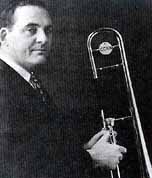 Much of what makes Levitt interesting, of course, is that there is no one like him. Mr. Landy's list covers arrangers, leaders and soloists, but I take it that "like Levitt" means he is asking about medium-sized groups. Six to eleven pieces allow arrangers freedom that the conventions and sheer size of sixteen-piece bands tend to limit. Medium-sized groups have been important since the beginnings of jazz. For Charles Landy and anyone else interested, I'll mention a few recordings from various eras and styles, with brief comments, and links to recordings where possible.
Much of what makes Levitt interesting, of course, is that there is no one like him. Mr. Landy's list covers arrangers, leaders and soloists, but I take it that "like Levitt" means he is asking about medium-sized groups. Six to eleven pieces allow arrangers freedom that the conventions and sheer size of sixteen-piece bands tend to limit. Medium-sized groups have been important since the beginnings of jazz. For Charles Landy and anyone else interested, I'll mention a few recordings from various eras and styles, with brief comments, and links to recordings where possible.
"Go 'Long, Mule" is a logical place to start in a survey of medium-sized groups, an investigation that could lead into dozens of interesting nooks and crannies. Fletcher Henderson organized the prototype of the big bands of the swing era. He eventually had fourteen pieces, but his first recording in the fall of 1923 was with six.
 Eight months passed before he expanded to ten men. They included the young avant garde players Coleman Hawkins, Don Redman and Louis Armstrong. All of them and trombonist Charlie Green solo on Redman's arrangement of "Go 'Long, Mule" from October, 1924. To hear it, click here. Remastering is far from perfect in the three-CD box set A Study In Frustration: The Fletcher Henderson Story, but it's the most Henderson available under one roof.
Eight months passed before he expanded to ten men. They included the young avant garde players Coleman Hawkins, Don Redman and Louis Armstrong. All of them and trombonist Charlie Green solo on Redman's arrangement of "Go 'Long, Mule" from October, 1924. To hear it, click here. Remastering is far from perfect in the three-CD box set A Study In Frustration: The Fletcher Henderson Story, but it's the most Henderson available under one roof.
Red Norvo's all-star nonet date of 1935 established no arranging landmarks, but it brought together a remarkable collection of players--Norvo, Bunny Berigan, Artie Shaw, Chu Berry, Jack Jenney, Teddy Wilson, George Van Eps, Artie Bernstein and Gene Krupa. Among the four pieces from the session is the remarkable "Blues in E-flat" with its masterpiece Norvo xylophone solo and very good choruses from Wilson and Berigan. The Norvo tracks are included in this CD.
In his series of combo recordings for RCA Victor in the late 1930s and early '40s, Lionel
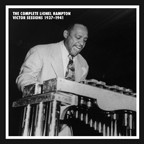 Hampton never had fewer than six pieces. He frequently had ten or eleven, and the players were the finest he could attract. Harry James, Dave Matthews, Babe Russin, Jess Stacy and Ziggy Elman--Hampton's white colleagues from the Benny Goodman band--were likely to team up in the studio with Benny Carter, Johnny Hodges, Herschel Evans, John Kirby and Billy Kyle.
Hampton's goal was to produce the best music possible, and he succeeded in dozens of superior examples of small band swing. In the process, like Goodman and Norvo, he pioneered in bringing black and white musicians together. All of the Hampton Victor sessions are in an indispensable new Mosaic box set.
Hampton never had fewer than six pieces. He frequently had ten or eleven, and the players were the finest he could attract. Harry James, Dave Matthews, Babe Russin, Jess Stacy and Ziggy Elman--Hampton's white colleagues from the Benny Goodman band--were likely to team up in the studio with Benny Carter, Johnny Hodges, Herschel Evans, John Kirby and Billy Kyle.
Hampton's goal was to produce the best music possible, and he succeeded in dozens of superior examples of small band swing. In the process, like Goodman and Norvo, he pioneered in bringing black and white musicians together. All of the Hampton Victor sessions are in an indispensable new Mosaic box set.
On a scale of orderliness, recordings by Hampton's medium-sized groups were a degree or two above jam sessions. Duke Ellington's were another matter. They were almost always led in name by members of his orchestra but, with few exceptions, Ellington did the "writing," even if it was last-minute studio inventions for the ensembles.
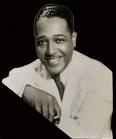 Whether the putative leader was Johnny Hodges, Barney Bigard, Cootie Williams or Rex Stewart, the small group sessions had Ellington's creative earmarks; plenty of opportunities for the soloists in arrangements notable for Ellington's genius at tonal organization, even in impromptu situations. A pair of two-CD boxes called The Duke's Men contains ninety-eight recordings made from 1934 to 1939 by medium-sized Ellington units. Some of them were lightweight, aimed at the pop market, but none is less than enjoyable, and they include classics like "Clouds In My Heart," "The Jeep Is Jumpin'," "Dooji Wooji" and "Stompy Jones."
Whether the putative leader was Johnny Hodges, Barney Bigard, Cootie Williams or Rex Stewart, the small group sessions had Ellington's creative earmarks; plenty of opportunities for the soloists in arrangements notable for Ellington's genius at tonal organization, even in impromptu situations. A pair of two-CD boxes called The Duke's Men contains ninety-eight recordings made from 1934 to 1939 by medium-sized Ellington units. Some of them were lightweight, aimed at the pop market, but none is less than enjoyable, and they include classics like "Clouds In My Heart," "The Jeep Is Jumpin'," "Dooji Wooji" and "Stompy Jones."
The first nine tracks on Johnny Hodges: Passion Flower are by a seven-piece Ellington group from 1940 and '41. They are essential to any reasonably serious jazz collection. The players are
 Hodges, Ellington Cootie Williams, Lawrence Brown, Harry Carney, Jimmy Blanton and Sonny Greer. The pieces are triumphs of small-group Ellingtonia: "Day Dream," "Good Queen Bess," "That's The Blues Old Man," Junior Hop," Squatty Roo," "Passion Flower," "Things Ain't What They Used To Be" and "Going Out The Back Way." I can sing along with every note of "Going Out The Back Way." It was the theme of my first radio program, Teen Talent Time, when I was seventeen. The engineer called it Teen Torture Time. But the theme song was terrific.
Hodges, Ellington Cootie Williams, Lawrence Brown, Harry Carney, Jimmy Blanton and Sonny Greer. The pieces are triumphs of small-group Ellingtonia: "Day Dream," "Good Queen Bess," "That's The Blues Old Man," Junior Hop," Squatty Roo," "Passion Flower," "Things Ain't What They Used To Be" and "Going Out The Back Way." I can sing along with every note of "Going Out The Back Way." It was the theme of my first radio program, Teen Talent Time, when I was seventeen. The engineer called it Teen Torture Time. But the theme song was terrific.
In 1946, Woody Herman and his Woodchoppers recorded nine tracks that are glories of the medium-sized oeuvre (I've always wanted to use that word). The
 Woodchoppers were a ten-piece unit from Herman's First Herd: Herman, clarinet and alto sax; Sonny Berman and Shorty Rogers, trumpet; Bill Harris, trombone; Flip Phillips, tenor sax; Red Norvo, vibes; Jimmy Rowles, piano; Billy Bauer, guitar; Chubby Jackson, bass; Don Lamond,drums; arrangements by Ralph Burns, Rogers and Bauer. Because of the popularity of Herman's band, the horn soloists and Norvo were among the most famous in jazz. Their solos are at a high level on the Woodchoppers tracks, the swing and spirit of the band irresistible, the arrangements ingenious, the execution full of harmonic and rhythmic daring. Rowles solos little, but his profoundly individual approach to accompaniment is vital to the success of these recordings.
Woodchoppers were a ten-piece unit from Herman's First Herd: Herman, clarinet and alto sax; Sonny Berman and Shorty Rogers, trumpet; Bill Harris, trombone; Flip Phillips, tenor sax; Red Norvo, vibes; Jimmy Rowles, piano; Billy Bauer, guitar; Chubby Jackson, bass; Don Lamond,drums; arrangements by Ralph Burns, Rogers and Bauer. Because of the popularity of Herman's band, the horn soloists and Norvo were among the most famous in jazz. Their solos are at a high level on the Woodchoppers tracks, the swing and spirit of the band irresistible, the arrangements ingenious, the execution full of harmonic and rhythmic daring. Rowles solos little, but his profoundly individual approach to accompaniment is vital to the success of these recordings.
"Igor," "Fan It" and "Lost Weekend" are on a two-disc First Herd set called Blowin' Up A Storm," but the only CD collection I can find that has all of the studio Woodchoppers tracks is Mosaic's The Complete Columbia Recordings of Woody Herman And His Orchestra & Woodchoppers (1945-1947). The other pieces are "Steps," "Four Men On A Horse," "Nero's Conception," "Pam," "I Surrender Dear" and "Someday Sweetheart." The Mosaic box includes alternate takes that allow the listener to hear how the pieces developed as the musicians achieved artistic and sonic balance. This is exquisite music.
In the next installment, we'll enter the bebop era and, possibly, get through the 1950s.
Since it was Saturday, there was less people in the streets.
I raved from the Lionel Hampton Jazz Festival about a performance of a solo piano piece written by Frederic Rzewski.
 Darcy James Argue (seen here), on his blog Secret Society, also raves about Rzewski. Here are the first two sentences from his review of a recital of Rzewski's music.
Darcy James Argue (seen here), on his blog Secret Society, also raves about Rzewski. Here are the first two sentences from his review of a recital of Rzewski's music.
Whew. The rest of it is just as breathless, just as informative, although not many of the other sentences are quite that long. To read all of it, go here. Argue's blog is a good way to look in on parts of the New York scene that you might not know about otherwise. I'm adding it to Other Places in the center column.In a lot of ways, Frederic Rzewski is a man out of time. Almost everything about him is anachronistic or contradictory or both -- he's a straight-up virtuoso composer-pianist in the Lisztian tradition, an old-school rugged bohemian whose chosen instrument remains a powerful symbol of class privilege, a distinctively American composer who has lived abroad for over 30 years, a gifted improviser who has recorded with fellow bohemians Steve Lacy and Irene Aebi, a student of arch elitists like Milton Babbitt and Roger Sessions who fell in with the wild boys of the New York School crowd (John Cage, Christian Wolff & co.), went on to write some influential early proto-minimalist works, and who in recent decades has returned to an austere 12-tone pitch vocabulary that would seem at odds with his proletarian politics.
Just wanted you to know that FINALLY we have a website. It's still in formation and we welcome any suggestions. It was created by Brian Chauley, former Fellow at Brubeck Institute and now assistant to the Exec. Director. We hope to do more by the addition of a newsletter and more photographs, and current news re: concerts etc. So visit us at davebrubeck.com.
Happy Spring to All!
Dave and Iola
Well, English usage fans, you are not alone. Our item the other day on needless, overused or just plain annoying words and phrases encouraged a torrent of them from you. To revisit the original piece and see the responses so far, click here. You'll have to scroll up to get to the beginning.
 Have a pleasant weekend and, as the sainted John Ciardi used to say, good words to you.
Have a pleasant weekend and, as the sainted John Ciardi used to say, good words to you.
Jazz is often described as being an extremely individualistic art form. You can figure out which jazz musician is playing because one person's improvisation sounds only like him or her," says Limb. "What we think is happening is when you're telling your own musical story, you're shutting down impulses that might impede the flow of novel ideas.
We can all think of soloists whose flow of novel ideas is impeded, but that's not the point of the study's findings. Rather, it is this:
It appears, they conclude, that jazz musicians create their unique improvised riffs by turning off inhibition and turning up creativity.
That may seem to be pointing out the obvious, but the details are fascinating. Four pianists served as subjects for the research by improvising on keyboards strapped to their laps as they lay in a functional magnetic resonance imaging machine, an fMRI. Don't try that at home. Johns Hopkins does not disclose whether the pianists swung. Reports about the study, many of them perfunctory, have turned up in newspapers everywhere. To read the complete Johns Hopkins news release that fueled those stories and to get leads to further information, go here. You may be surprised to learn what your medial prefrontal cortex has been up to.
 Book tip: For more on the growing understanding of how the brain works, read The Body Has A Mind Of Its Own by New York Times Science writer Sandra Blakeslee and her son Matthew. They write with clarity, wit and a sense of discovery.
Book tip: For more on the growing understanding of how the brain works, read The Body Has A Mind Of Its Own by New York Times Science writer Sandra Blakeslee and her son Matthew. They write with clarity, wit and a sense of discovery.
I never sit down and write. I just sorta let things form in my brain. -- Mose AllisonIf only we could pull out our brain and use only our eyes. -- Pablo Picasso
 Friends who loved Dennis Irwin and listeners who admired him came forward with help when his cancer and lack of health insurance became known in January. But the bassist died in New York City Monday shortly before the biggest of several benefits for him. He was fifty-six. Details of Irwin's life and career are in this story on the JazzTimes website. During the height of the fund-raising effort, jazz video producer Bret Primack put together a mini-documentary about Irwin. To see it, click here.
Friends who loved Dennis Irwin and listeners who admired him came forward with help when his cancer and lack of health insurance became known in January. But the bassist died in New York City Monday shortly before the biggest of several benefits for him. He was fifty-six. Details of Irwin's life and career are in this story on the JazzTimes website. During the height of the fund-raising effort, jazz video producer Bret Primack put together a mini-documentary about Irwin. To see it, click here.
Phil Bodner, a reed specialist who played on hundreds of studio
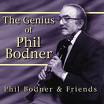 recording sessions in and out of jazz in New York, died in late February at the age of ninety. Among the projects he worked on were the Miles Davis-Gil Evans Porgy and Bess album and dates with Frank Sinatra and Ella Fitzgerald. Best known for his section work on several instruments, Bodner was a talented soloist who late in life recorded as a leader and clarinetist with sidemen including Hank Jones, Gene Bertoncini and Dick Hyman. For more on Bodner, go here.
recording sessions in and out of jazz in New York, died in late February at the age of ninety. Among the projects he worked on were the Miles Davis-Gil Evans Porgy and Bess album and dates with Frank Sinatra and Ella Fitzgerald. Best known for his section work on several instruments, Bodner was a talented soloist who late in life recorded as a leader and clarinetist with sidemen including Hank Jones, Gene Bertoncini and Dick Hyman. For more on Bodner, go here.
Omit needless words.
Harold Ross, the founding editor of The New Yorker, wrote in a memo to his staff, "The next writer around here who uses 'upcoming' will be outgoing."
That's a good word to put at the top of a list of needless, overused and annoying words and phrases. Here is the first dozen.
upcoming
absent (as a preposition)
area (as an adjective)
as it were
at this point in time
case in point
if you will
like (as an interjection)
ongoing
the likes of
that said
y'know
Edwin Newman of NBC News recalled the time a man he was interviewing told him, "Well, y'know, y'never know, y'know."
The Rifftides staff solicits your suggestions for additions to the list.
And then when I went to Chicago, that's when I had these outer space experiences and went to the other planets. -- Sonny Blount (Sun Ra)
...even if this story is revisionist autobiography ... Sonny was pulling together several strains of his life. He was both prophesying his future and explaining his past with a single act of personal mythology.-- John F. Szwed, Space Is the Place: The Lives and Times of Sun Ra (Pantheon, 1997)
Sun Ra: Space Is The Place (1974)
Sun Ra Arkestra: Face The Music (1990)
 Joe Lovano (pictured), Hal Galper and Jack Walrath will headline a concert at the Berklee College of Music. Proceeds will benefit the Herb Pomeroy Scholarship Fund. Pomeroy, trumpeter, arranger, and Berklee teacher for four decades, died last August. Among the school's alumni whose compositions and arrangements will be played by the Berklee Concert Jazz Orchestra are Alan Broadbent, Toshiko Akiyoshi, Michael Gibbs and the longtime Berklee teacher John LaPorta. For more information, go here and scroll down.
Joe Lovano (pictured), Hal Galper and Jack Walrath will headline a concert at the Berklee College of Music. Proceeds will benefit the Herb Pomeroy Scholarship Fund. Pomeroy, trumpeter, arranger, and Berklee teacher for four decades, died last August. Among the school's alumni whose compositions and arrangements will be played by the Berklee Concert Jazz Orchestra are Alan Broadbent, Toshiko Akiyoshi, Michael Gibbs and the longtime Berklee teacher John LaPorta. For more information, go here and scroll down.
Following Teo Macero's death on February 19, most news stories and obituaries concentrated on his role as the producer of Miles Davis's Columbia recordings. Beginning in 1959 with Kind of Blue, Macero edited or oversaw Davis's sessions, which included those for Sketches Of Spain, In A Silent Way, and Bitches Brew, some of the most influential albums of the past fifty years. With exceptions, notably in the editing of In A Silent Way, Macero got along well with Davis. "We had our battles," Macero said after Davis's death in 1991:
There were times when he wouldn't speak to me and I wouldn't speak to him. It's like a husband and wife. There are times when you just like to be left alone.
Kind Of Blue and Sketches Of Spain became two of the best-selling jazz albums in history.
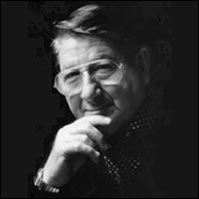 It was barely noted in most of the articles, and not at all in some, that Macero was himself a gifted musician who won a scholarship to the Juilliard School and emerged as a daring composer of atonal acoustic and electronic music. He was also a talented and highly individual tenor saxophonist prized by Charles Mingus, among other important jazz artists of the 1950s. After he joined Columbia as an editor then moved up to producer, his playing took a back seat and he became one of the label's busiest recording executives. Nonetheless, Macero did not give up his saxophone. The drummer Kenny Harris, who moved from England to New York then settled in Bermuda, had a playing encounter with Macero. He writes Rifftides from Hamilton, Bermuda.
It was barely noted in most of the articles, and not at all in some, that Macero was himself a gifted musician who won a scholarship to the Juilliard School and emerged as a daring composer of atonal acoustic and electronic music. He was also a talented and highly individual tenor saxophonist prized by Charles Mingus, among other important jazz artists of the 1950s. After he joined Columbia as an editor then moved up to producer, his playing took a back seat and he became one of the label's busiest recording executives. Nonetheless, Macero did not give up his saxophone. The drummer Kenny Harris, who moved from England to New York then settled in Bermuda, had a playing encounter with Macero. He writes Rifftides from Hamilton, Bermuda.
When I was playing at Elbow Beach in the 60's I also had a jazz show on ZBM radio on Saturday afternoons. Teo was vacationing here and had read in the newspaper that Jim Hall was to be a guest on my show. He called me as he wanted to speak to Jim - Jim was not in the studio as the interview had been recorded earlier in the week and he had gone back to New York. Teo came into Elbow Beach one evening and asked if he could sit in with the band. He borrowed a tenor saxophone and played in his usual style. Everyone in the nightclub left. Everytime I saw him in New York after that he would always say to me "If you want to clear a nightclub, give me a call."
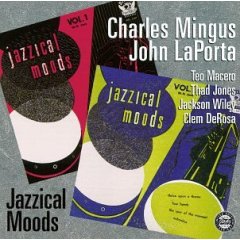 It's an amusing story, but if Macero was playing "in his usual style," the Elbow Beach patrons walked out on some fine music. He is prominent on Jazzical Moods, a 1954 album co-led by bassist Mingus and alto saxophonist John LaPorta, and also featuring the young trumpeter Thad Jones. It was a remarkable gathering of far-sighted adventurers whose music foreshadowed jazz departures made later in the decade.
It's an amusing story, but if Macero was playing "in his usual style," the Elbow Beach patrons walked out on some fine music. He is prominent on Jazzical Moods, a 1954 album co-led by bassist Mingus and alto saxophonist John LaPorta, and also featuring the young trumpeter Thad Jones. It was a remarkable gathering of far-sighted adventurers whose music foreshadowed jazz departures made later in the decade.
Teo Macero, 1925-2008.
Someone known to me only by the e-mail handle "Bloorondo" pointed out links to a pair of Dave Brubeck video performances new to me and, perhaps, to you. The first, "All The Things You Are," was at a concert in Berlin in 1972 when Gerry Mulligan was the saxophonist in the Brubeck Quartet and Paul Desmond joined them on tour. Jack Six was the bassist, Alan Dawson the drummer. Brubeck, Mulligan and Six are turned out in seventies fashions, including lots of hair. Be sure to notice Brubeck's trousers; not that you could help it. Dawson's and Desmond's wardrobes and hairdos are, as usual, restrained. Desmond is wearing his frequent attire of later years, The Suit (see Take Five: The Public and Private Lives of Paul Desmond, page 257). The playing by all hands is at a high level, with interesting Desmond/Mulligan counterpoint at the end. Camera work, direction and audio quality are good. To watch it, click here.
"In Your Own Sweet Way" is by the classic Brubeck Quartet with Desmond, Eugene Wright and Joe Morello. My guess is 1964, but it could be a year or two either way. This is a notably lyrical performance by Desmond, with the kind of assistance from Brubeck that led Desmond to frequently praise him as an ideal accompanist. The Wright-Morello mutual admiration society is in session. Click here.
Welcome to the new, improved, more functional Rifftides. Artsjournal.com commander-in-chief Doug McLennan and his team spiffed us up as the pioneer site (aka guinea pig) in reformatting all of the artsjournal.com blogs. The Rifftides staff thanks them for a dazzling makeover.
There is a change in the comments procedure. You will still click on the "Comments" link below each item. That takes you to a simple form. After you have filled in the form, you will be asked to enter a couple of words in a box before you submit the comment. If all works as planned, that will end the tsunami of spam that has plagued us for months. The Rifftides staff encourages you to try it out.
You may also correspond using the "Contact me" link in the first of the two right-hand columns. Either way, please let us know how you like the new Rifftides. For your celebratory opening-day bonus, click on this link for video of a Thelonious Monk piece by pianist Jessica Williams.
Rifftides reader George Finch sent this message in reaction to a ten-year-old article in The
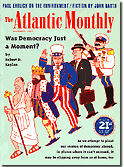 Atlantic. There has been so little essential change in jazz since 1997 that The Atlantic piece might have been written last week. It consists mainly of a conversation among authors Tom Piazza, the late Eric Nissensen and the magazine's Ryan Nally. To read the article, go here.
Atlantic. There has been so little essential change in jazz since 1997 that The Atlantic piece might have been written last week. It consists mainly of a conversation among authors Tom Piazza, the late Eric Nissensen and the magazine's Ryan Nally. To read the article, go here.
Just read Eric Nissensen's book while I was in Boston, and happened to come across this article. Haven't read Tom Piazza's book, but Nissensen makes a lot of good points, although he goes overboard on Wynton and his "neo-conservatism". I didn't know that Marsalis was powerful enough to shape jazz. Also, Nissensen's existentialist definition of jazz as almost pure process is a tad extreme, although a good searchlight. It is a creative process that defines itself as people create the music, but the process does not take place in a void. There seems to be a tradition that they work with, and the good ones will not be content just rehashing it. There will always be " there must be something else".
Well, enough. I am not a musician, just trying to learn and think things out. Where do you stand visa vis their chit chat, and who are some of the musicians forging new directions in jazz?
Marsalis did not shape jazz. He shaped himself, shaped Jazz At Lincoln Center and served as a role model to young musicians. Nissensen confused that with shaping jazz. I am not aware of musicians who are forging new directions in jazz, despite blather and ceaseless promotional claims, more of them from managers, agents, publicists and record companies than from musicians.
Unless I've missed something (always a possibility), the last time new directions were forged was the late fifties, early sixties - Ornette Coleman, John Coltrane, Bill Evans, Miles Davis. Every "departure" since then has been imitation or elaboration. Fusing jazz and Latin, jazz and klezmer, jazz and blue grass, hip-hop, classical, folk, ragas, gamelan, etc., etc., etc., does not consitute newness. It constitutes fusion. Some of it is wonderful, but none of it amounts to innovations like those of Armstrong, Young, Parker, Gillespie, Evans, Coltrane, even Coleman. Playing without guidelines, which in the final analysis is impossible and which Ornette neither did nor claimed to do, is not a new direction.
There is a powerful and apparently unquenchable notion that to be worthwhile, music must break new ground. It is difficult enough, and should be satisfying enough, to play and write music well. To say that, is not to downgrade or discourage searching and experimentation. Even searches that lead nowhere and experiments that fail can be valuable and interesting. If a new direction is being forged, we will recognize it when the forging produces something so artistically powerful that it doesn't need public relations to announce it or critics to analyze it.
 For weeks, the CD reissue of Phineas Newborn, Jr.'s 1961 album A World of Piano! has been propped up near my computer as a reminder to post something about him. It is neither his birthday (December 14, 1931) nor the anniversary of his death (May 26, 1989), and no recently discovered Newborn recording has been released, but we need no special occasion to remember his astonishing talent.
For weeks, the CD reissue of Phineas Newborn, Jr.'s 1961 album A World of Piano! has been propped up near my computer as a reminder to post something about him. It is neither his birthday (December 14, 1931) nor the anniversary of his death (May 26, 1989), and no recently discovered Newborn recording has been released, but we need no special occasion to remember his astonishing talent.
Because he was sporadically troubled by emotional instability, Newborn's career was spotty. He never got the recognition his virtuosity might have brought him if his health had been on an even keel. Still, from the time the young man from Memphis debuted with Lionel Hampton in 1950, musicians and informed listeners were aware that he was a phenomenon. He made a splash in New York in the mid-fifties when Count Basie and the producer-promoter John Hammond gave him a boost. He worked in a duo with Charles Mingus and played with the bassist on the soundtrack of John Cassevetes' celebrated art film Shadows. His recordings on RCA, Atlantic, Roulette, Steeplechase, Pablo and a smattering of other labels remain available and sell steadily if modestly. Few serious jazz pianists are without Newborn shelves in their collections.
Through the '60s and '70s he recorded a series of albums for Contemporary, at first as a sideman with Howard McGhee and Teddy Edwards, then four under his own name. Concord Records, the custodian of the Newborn Contemporary CDs, has allowed several of them to drop out of the Original Jazz Classics catalogue. Some of them have resurfaced as imports and may be found, along with other Newborns, at this web site. It would be difficult to go wrong with any of them. There are, as far as I can determine, no Phineas Newborn albums worthy of fewer than four-and-a-half stars out of five. You will find his complete discography here.
A few clips of Newborn playing with the monumental bassist Al McKibbon and drummer Kenny Dennis have shown up on You Tube. They all seem to come from the Jazz Scene USA televison program hosted by Oscar Brown, Jr., in the early 1960s. If you're unfamiliar with Newborn, try "Oleo" for an introduction to the piston-perfect technique of his fast playing and "Lush Life" for proof that his harshest critics were wrong when they accused him of being without feeling.
As for the pronunciation of Newborn's first name, it has been solidly established by family and close friends that he preferred "Fín-uhs" (as in "finest").
A frisky spirit makes my trombone sing.--Chris Barber
Never look at the trombones. You'll only encourage them.--Richard Strauss
Julian Priester is a musician of uncommon breadth as a composer, leader
 teacher and--most notably--a highly individual and subtle trombone soloist . Priester is quiet and self-effacing, but he could justifiably boast about having satisfied such contrasting leaders as Duke Ellington and Sun Ra, Cal Tjader and John Coltrane, Lionel Hampton and Dave Holland, Bo Diddley and Max Roach, among others. Since he immersed himself in academia thirty years ago, opportunities to hear Priester live have been rarer than when he was in the thick of the New York, Los Angeles and San Francisco jazz scenes.
teacher and--most notably--a highly individual and subtle trombone soloist . Priester is quiet and self-effacing, but he could justifiably boast about having satisfied such contrasting leaders as Duke Ellington and Sun Ra, Cal Tjader and John Coltrane, Lionel Hampton and Dave Holland, Bo Diddley and Max Roach, among others. Since he immersed himself in academia thirty years ago, opportunities to hear Priester live have been rarer than when he was in the thick of the New York, Los Angeles and San Francisco jazz scenes.
Last night, I had had one of those rare opportunities. Priester and pianist Dawn
 Clement, his teaching colleague and former student at Seattle's Cornish College of the Arts, brought their quartet to The Seasons. The concert was superb throughout, but in three extended pieces following the intermission, it went beyond that. Five years ago Priester's CD In Deep End Dance, was striking for the rapport between the sixty-seven-year-old trombonist and the pianist then in her early twenties. Their empathy has deepened. Last night with the collaboration of bassist Geoff Harper and drummer Jose Martinez, the power of their performance built through the evening until, on the final number, the swing feeling reached a happy intensity that raised it above the "having a good night" category. The piece was Priester's "First Nature." For the musicians and the audience, it became a memorable experience in ¾ time, one nobody in the room is likely to forget.
Clement, his teaching colleague and former student at Seattle's Cornish College of the Arts, brought their quartet to The Seasons. The concert was superb throughout, but in three extended pieces following the intermission, it went beyond that. Five years ago Priester's CD In Deep End Dance, was striking for the rapport between the sixty-seven-year-old trombonist and the pianist then in her early twenties. Their empathy has deepened. Last night with the collaboration of bassist Geoff Harper and drummer Jose Martinez, the power of their performance built through the evening until, on the final number, the swing feeling reached a happy intensity that raised it above the "having a good night" category. The piece was Priester's "First Nature." For the musicians and the audience, it became a memorable experience in ¾ time, one nobody in the room is likely to forget.
Last year, Priester, Clement, Harper and Martinez recorded much of the music they played last night. Harper told me that "First Nature" reached the same height at the record session in Rudy Van Gelder's studio as it did at The Seasons. That CD will be out later this year. I look forward to it.
Coincidentally, two new CDs involving Clement arrived a few hours before last night's concert. One is her own album, Break, with drummer Matt Wilson and bassist Dean Johnson. The other is soprano saxophonist Jane Ira Bloom's Mental Weather, also with Wilson, and bassist Mark Helias. I'll be listening further to both, but a couple of hearings of each persuade me further that Dawn Clement is one of the most interesting pianists to emerge in years. In the precision and interaction of her work with Bloom, she fully employs both her classical technique and her jazz soul. It seems to me that in Bloom's extensive discography, Mental Weather is one of the finest things she has done.
AJ Ads
AJ Blogs
AJBlogCentral | rssculture
Terry Teachout on the arts in New York City
Andrew Taylor on the business of arts & culture
rock culture approximately
Laura Collins-Hughes on arts, culture and coverage
Richard Kessler on arts education
Douglas McLennan's blog
Dalouge Smith advocates for the Arts
Art from the American Outback
Chloe Veltman on how culture will save the world
For immediate release: the arts are marketable
No genre is the new genre
David Jays on theatre and dance
Paul Levy measures the Angles
Judith H. Dobrzynski on Culture
John Rockwell on the arts
innovations and impediments in not-for-profit arts
Jan Herman - arts, media & culture with 'tude
dance
Apollinaire Scherr talks about dance
Tobi Tobias on dance et al...
jazz
Howard Mandel's freelance Urban Improvisation
Focus on New Orleans. Jazz and Other Sounds
Doug Ramsey on Jazz and other matters...
media
Jeff Weinstein's Cultural Mixology
Martha Bayles on Film...
classical music
Fresh ideas on building arts communities
Greg Sandow performs a book-in-progress
Harvey Sachs on music, and various digressions
Bruce Brubaker on all things Piano
Kyle Gann on music after the fact
Greg Sandow on the future of Classical Music
Norman Lebrecht on Shifting Sound Worlds
Joe Horowitz on music
publishing
Jerome Weeks on Books
Scott McLemee on books, ideas & trash-culture ephemera
theatre
Wendy Rosenfield: covering drama, onstage and off
visual
Public Art, Public Space
Regina Hackett takes her Art To Go
John Perreault's art diary
Lee Rosenbaum's Cultural Commentary
